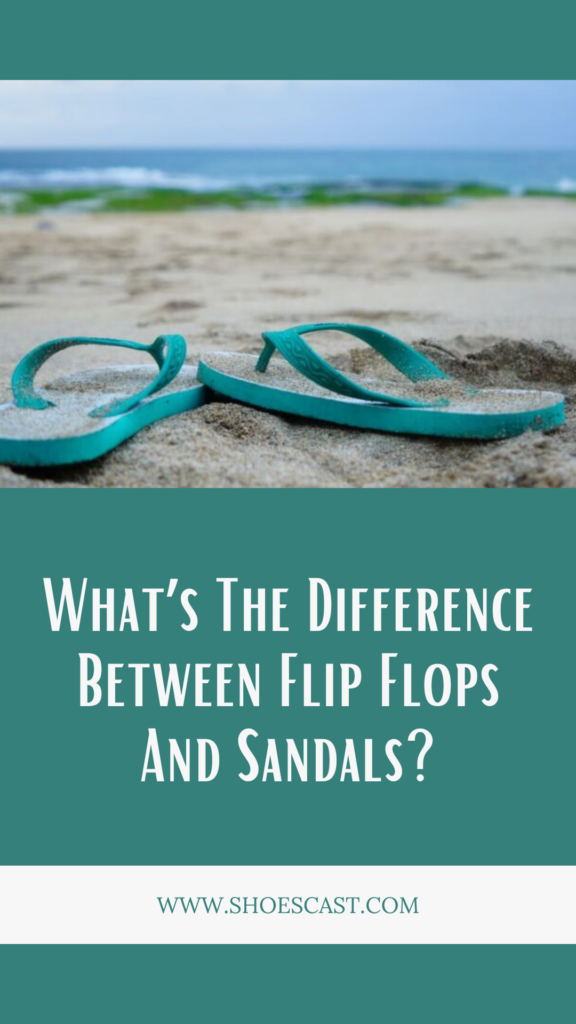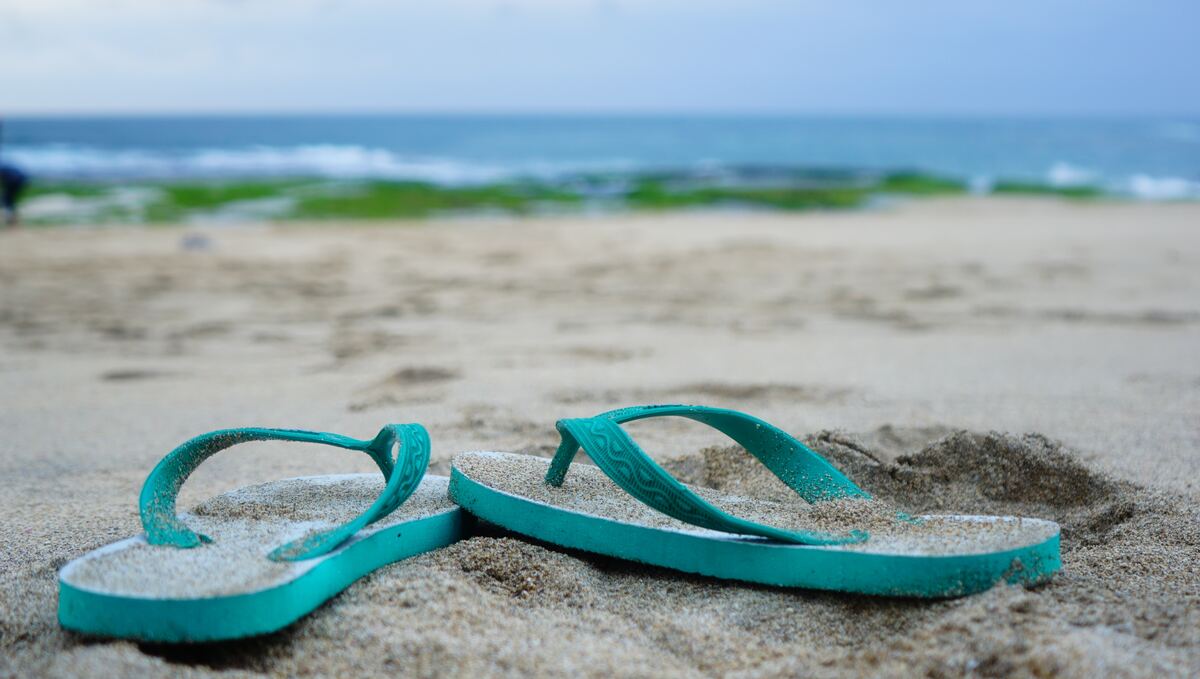Flip-flops and sandals are summer staples that everybody owns. Whether you’re scheduled for a holiday staycation or heading off to a luxurious hotel abroad, you’re going to need either of the two (or both!) to complete your summer. What’s the difference between flip-flops and sandals, though?
Sandals are said to be the eldest and most commonly found footwear worldwide. Flip-flops are either too thin or too flat, but we do need to mention that they’ve come a long way over the past few years. Flimsy flip-flops are a thing of the past, and designer, cushy, and comfy flip-flops are taking over.
When the temperatures finally rise and the sun is officially out, all we want to do is hop out of our sweaty, stinky sneakers and slide into a pair of flip-flops or sandals. A new addition to our summer wardrobe is always worth investing in, but which of the two are we supposed to go for? Flip-flops or sandals?
Whether your idea of shopping for the best summer staples is investing in classic Birkenstocks or everyone’s favorite The Row platform flip-flops, in this round-up, we’ve got you covered. What are flip-flops? What are sandals? And what’s the difference between flip-flops and sandals? Let’s find out!
What are flip-flops?
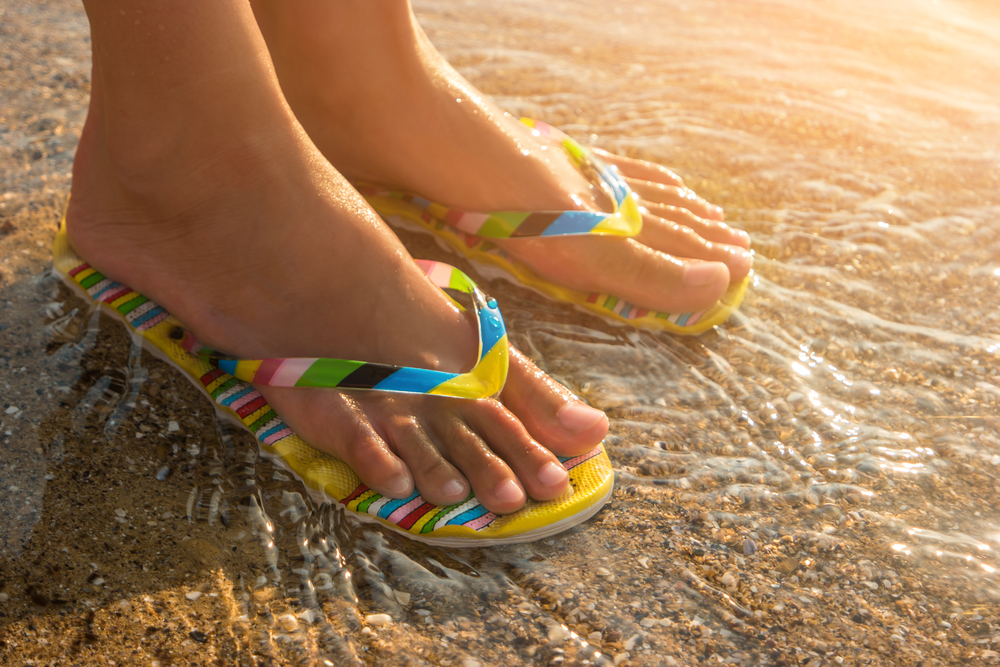
“Aren’t flip-flops technically sandals anyway?” When trying to define flip-flops, we can’t forget about the fact that flip-flops are a type of sandal. Flip-flops consist of a sole and an open upper that uses straps to attach to the sole – the same as sandals.
But when you put a flip-flop next to a stiletto sandal or a strappy sandal, you’ll immediately notice how widely different the two styles look. Because of that, flip-flops are more of a sandal exception than a rule.
Flip-flops are thong-style sandals defined by a Y-shaped strap that wraps around your foot when you’re wearing them. Furthermore, flip-flops are oftentimes accused of making a “flopping” sound when you’re walking (which might be why they’re called flip-flops in the first place).
Finally, not all sandals are flip-flops, but all flip-flops are sandals. We can agree that the difference between the two styles might be a little difficult to understand when you compare them by definitions, but there’s much more to flip-flops and sandals than meets the eye.
While the two terms are intertwined, they are by no means synonymous. What are sandals, anyway?
What are sandals?
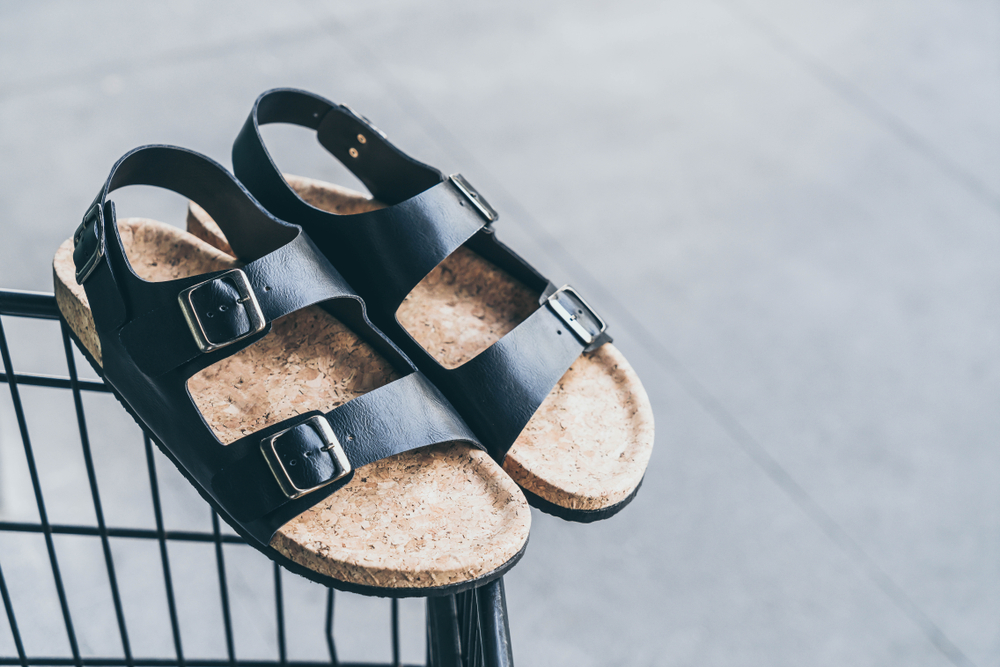
Sandals and flip-flops are similar, but they’re not the same. What’s up with that? By definition, sandals are summer footwear featuring an open upper attached by a single strap or multiple straps to the sole.
Cute and comfy, sandals are meant to keep the upper part of your foot exposed, even though they’re known to offer more coverage when they’re made with multiple straps.
Sandals come in a myriad of styles – from high-heeled sandals and stiletto sandals to platforms, wedges, and slide sandals, we could go on and on about how many you can choose from.
Flip-flops, on the other hand, are exactly what you think they are – you can’t choose between different types of flip-flops. Flip-flops can be made with different materials, different levels of arch support, and even different features, but that’s about it.
Sandals, on the other hand, are versatile. When shopping for sandals, you need to figure out which type of sandal you’re on the hunt for before you venture into stores. Sandals can be made of different materials, too, and can come with different levels of arch support, features, and functions.
We don’t mean to start any drama, but it’s looking like sandals are the superior summer staple. What’s the difference between flip-flops and sandals, though?
What’s the difference between flip-flops and sandals?
1. Appearance
Starting with the most obvious difference, flip-flops and sandals don’t look the same. We’ve already mentioned that not all sandals are flip-flops, but all flip-flops are sandals. What we’re trying to say is that flip-flops are a type of sandal, and that can be seen in their appearance, too.
Flip-flops are typically made of a T-shaped strap attached to a sole, but the way sandals are made depends on the style of the sandal we’re talking about. Strappy sandals, for example, are made with multiple thin straps wrapping around the foot and the ankle and a heel that can be high or low.
Gladiator sandals are made with multiple thick straps that wrap around the foot, the ankle, and even the calf, depending on the style. Sandals consist of a grouping of several silhouettes of summer staples, and flip-flops are one of these many silhouettes.
2. Material
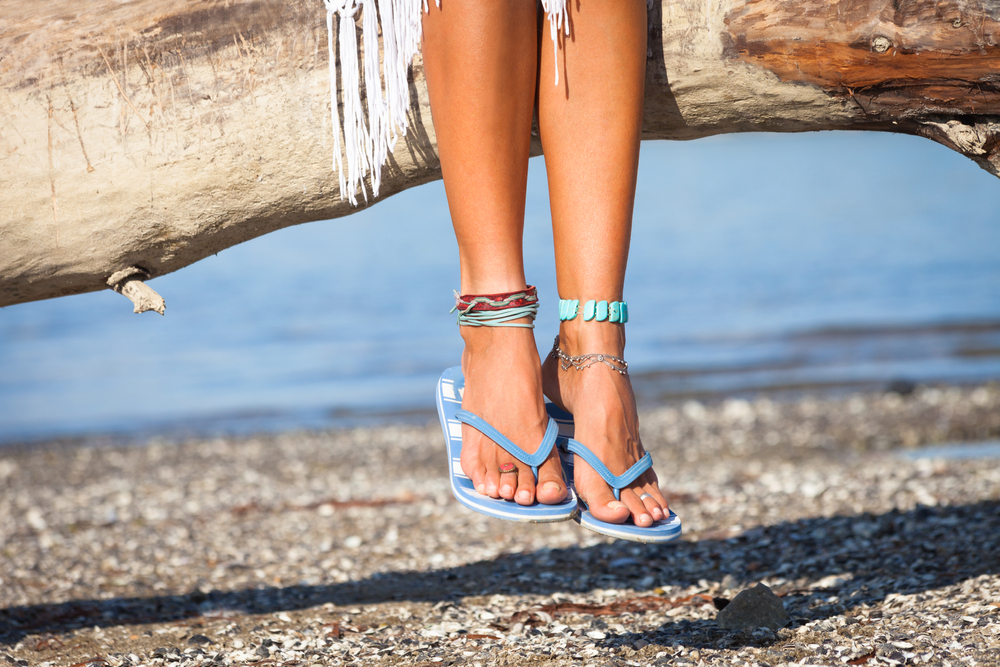
While today’s flip-flops and sandals are a lot more fashion-forward than ever before, generally speaking, these two footwear essentials aren’t made with the same materials. Flip-flops are typically much more lightweight, flat, and flimsy, and sandals are much more substantial.
Plastic, rubber, and foam are the most commonly used materials when we’re talking about the classic, inexpensive flip-flops we typically wear on the beach. Budget-friendly, flip-flops are the perfect option to consider when you’re on the hunt for something simple and fuss-free.
Sandals, on the other hand, are typically made with thicker materials such as leather, suede, cork, rope, or rubber, and they’re much more durable. Sandals can be worn pretty much everywhere, depending on the style of sandal you opt for.
3. Heel height
We mentioned before that flip-flops refer to a thin, flat, and flimsy type of footwear. Knowing that, we can conclude that flip-flops are typically much more casual, relaxed, and comfortable than sandals. But sandals refer to a wide variety of styles that can be thin or thick, flat or high-heeled, flimsy or sturdy.
Before you head to the nearest shopping mall to check out the summer collection, make sure you understand the difference between flip-flops and sandals’ heel height.
Flip-flops are almost always flat, while sandals feature a variety of heel styles and heights. Strappy sandals, stiletto sandals, and platform sandals, for example, feature a little (or a lot) of height. Slides and huaraches sandals feature flat, thin soles same as flip-flops.
4. Open vs. closed back
Flip-flops feature an open back without straps wrapping around the ankle for that signature “flopping” sound. Sandals, on the other hand, almost always have some sort of strap or fabric that wraps around the ankle and keeps the sandal’s back flush with the wearer’s heel.
By definition, sandals don’t need to have that additional strap or fabric to be considered a sandal. Slides, mules, and flip-flops, for example, all have open backs with no ankle or heel strap.
Strappy sandals, T-strap sandals, gladiators, and an array of other styles do, however, feature some sort of heel security, making the closed back yet another difference between flip-flops and sandals.
5. Support
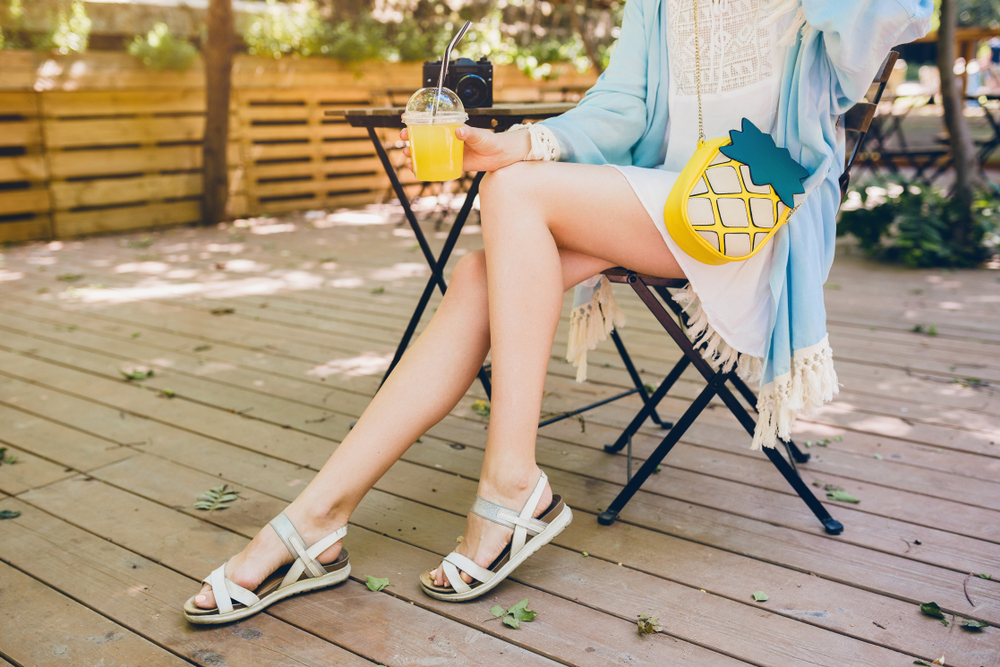
Arch and ankle support are features that most wearers pay attention to. Whether you’re shopping for a running sneaker to get you through your next workout pain and pressure-free, or a winter boot to keep you warm, comfortable, and cozy when it’s cold, you probably want some sort of support.
Sandals, being a summer stable, aren’t known to offer the same amount of support that sneakers and boots do. But that doesn’t mean that arch and ankle support are out of the question.
Nowadays, you can find both flip-flops and sandals with features and functions that promise to keep you on your feet all day long. Flip-flops, however, are less likely to come with any ankle support.
6. Construction
Flip-flops are oftentimes made of lightweight, breathable materials that add to the casual, relaxed feel of flimsy footwear. Foam and plastic make flip-flops simple to slip on and off, airy enough to bring with you on the go, and wearable enough to serve you regardless of the occasion.
Sandals are similar, but they’re typically made with stiffer, sturdier materials that last longer. Materials such as leather, rubber, and robust textiles are much more high-quality and hard-wearing, but they’re also the main reason sandals look a lot more elevated than flip-flops.
7. Occasion
Wear whatever you want, whenever you want. We stand by that rule, but we do need to focus on the difference between flip-flops and sandals, and that’s why we can’t pass on the opportunity to talk about this.
Flip-flops are wholly casual and appropriate for off-duty wear, from grabbing coffee on the go and running errands to sunbathing by the pool or going on a beach walk.
Sandals, however, are much more versatile than flip-flips. Depending on the style, you can wear sandals to the office, an evening event, or even a wedding. Strappy and stiletto sandals are wardrobe must-haves because they’re perfect for different occasions.
8. Price
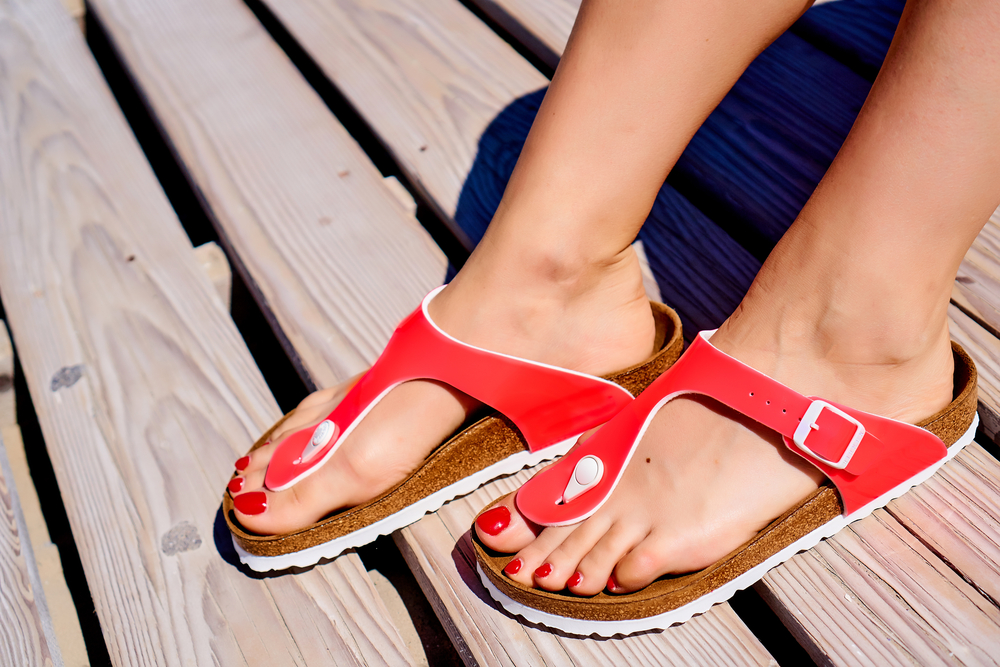
On the surface, flip-flops are cheaper than sandals because they’re made of lightweight materials – you can get yourself a pair of flip-flops for $5 and call it a day.
Sandals are more expensive than flip-flops because they’re made with a sturdier construction, elevated materials, and more complex designs. The cheapest sandals you can find are probably $20 at a thrift store.
Of course, when you take a peep at designer flip-flops and sandals, these prices no longer make sense because both flip-flops and sandals are freakin’ expensive. Oh well, that’s why it’s up to you to decide.
Read more: A Step-By-Step Guide To Different Types Of Sandals
